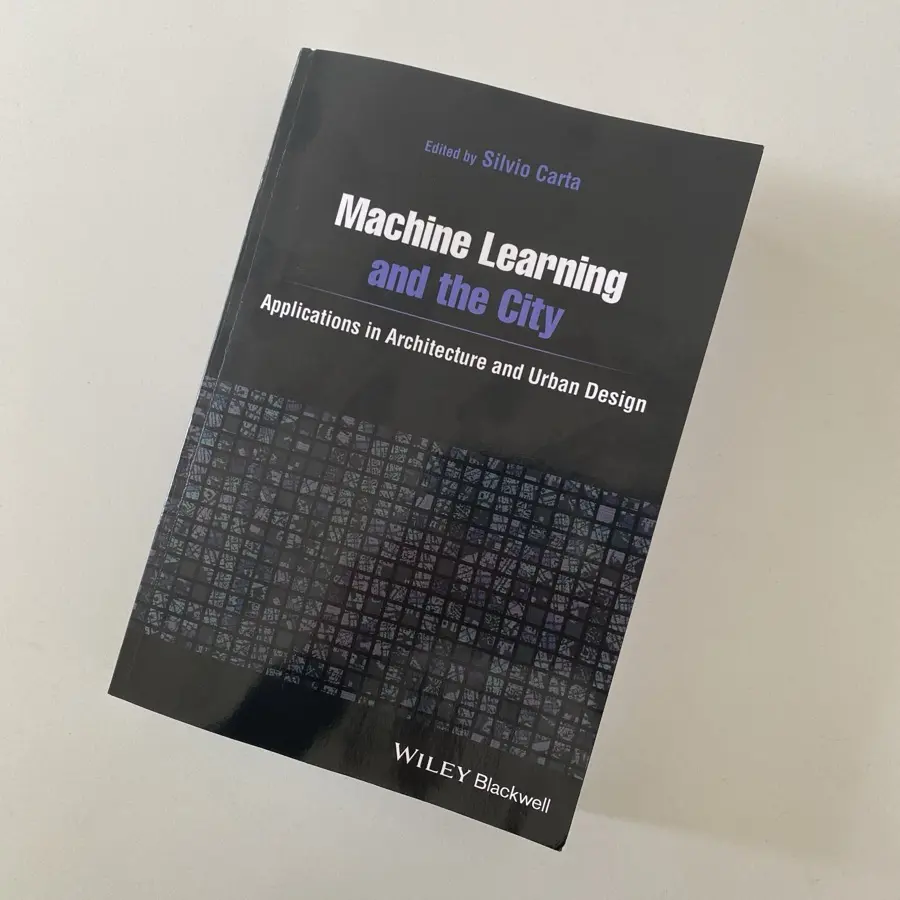Machine Learning and the City
978-1-1197-4963-9
© 2022 
Silvio Carta _ Editor, Preface
machine learningartificial intelligenceurban designarchitectureresearchacademicexpensive
Description
Machine Learning and the City: Applications in Architecture and Urban Design delivers a robust exploration of machine learning (ML) and artificial intelligence (AI) in the context of the built environment. Relevant contributions from leading scholars in their respective fields describe the ideas and techniques that underpin ML and AI, how to begin using ML and AI in urban design, and the likely impact of ML and AI on the future of city design and planning.\n
Each section couples theoretical and technical chapters, authoritative references, and concrete examples and projects that illustrate the efficacy and power of machine learning in urban design. The book also includes:\n
* An introduction to the probabilistic logic that underpins machine learning\n * Comprehensive explorations of the applications of machine learning and artificial intelligence to urban environments\n * Practical discussions of the consequences of applied machine learning and the future of urban design\n\n
Perfect for designers approaching machine learning and AI for the first time, Machine Learning and the City:\n Applications in Architecture and Urban Design will also earn a place in the libraries of urban planners and engineers involved in urban design.
























Contributors
Prof. Silvio M. Carta
_ Editor, Preface
Biography of Prof. Silvio M. Carta
Dr Silvio Carta is an architect (ARB/RIBA), Chartered Building Engineer (MCABE) and Professor of Architecture at the University of Greenwich.\nHis research includes Artificial Intelligence and Machine Learning design methods applied to the built environment, urban data science, data-driven approaches and computational design. He is currently the Section Editor of Computational Sustainability and Design, City and Built Environment (Springer/Nature), and a member of the technical committee: Data Sensing & Analysis (DSA) of the European Council on Computing in Construction (EC3).\nPrior to joining Greenwich, Silvio led the department of Architecture and Design at the University of Hertfordshire (2013-2023), where he played a substantial role in the foundation and development of Architecture in the University, including undergraduate and postgraduate, as well as research programmes.\nSilvio is a member of AHRA: Architectural Humanities Research Association, ACADIA: Association for Computer Aided Design in Architecture, as well as Senior Fellow Higher Education Academy (SFHEA), elected Fellow of the Royal Society of Arts (FRSA). Silvio is an Accreditation Visitor for the ARB and currently Visiting Fellow in the Department for Continuing Education, University of Oxford.\nHe is the author of Big Data, Code and the Discrete City. Shaping Public Realms (Routledge 2019), Machine Learning and the City: Applications in Architecture and Urban Design (Wiley 2022), and Accidental Collectives: How Computers Create Social Structures (Palgrave MacMillan/Springer Nature 2024).Publisher
Wiley BlackwellSpecifications
Cover Paperback Pages 672ppNotes
- Contributed the essay Design Fiction: A Short Essay on Design, Science, Fact, and Fiction
- Nice characterization of Design Fiction by Silvio: Julian Bleecker (Near Future Laboratory) in Chapter 24 discusses his idea of Design Fiction as a way to generate future scenarios in design, science, fact and fiction. Bleecker's work on Design Fiction is increasingly used by designers as a successful strategy to explore the possible consequences (both in a positive and negative light) of technology for people. Bleecker's work explains how design fiction can be used to influence the general public's understanding or expectations about new technology, thus providing this technique with an active design role. We then introduce an extreme position where the development of intelligent systems and Al may reach a point in the future when the current balance of human-machine is completely altered.
- Cool to have an essay in a book that just precedes Ray Kurzweil!
- Another one of those crazily priced academic books — $116 or something like that. Nuts!


Want to learn more? Curious how we work? Feel like your organization could use a bit more Imagination to help make sense of the dynamic character of a kinetic marketplace?
Use the Contact Form below to discuss how you can engage Near Future Laboratory to help you make sense of your organization's possible futures.
Use the Contact Form below to discuss how you can engage Near Future Laboratory to help you make sense of your organization's possible futures.